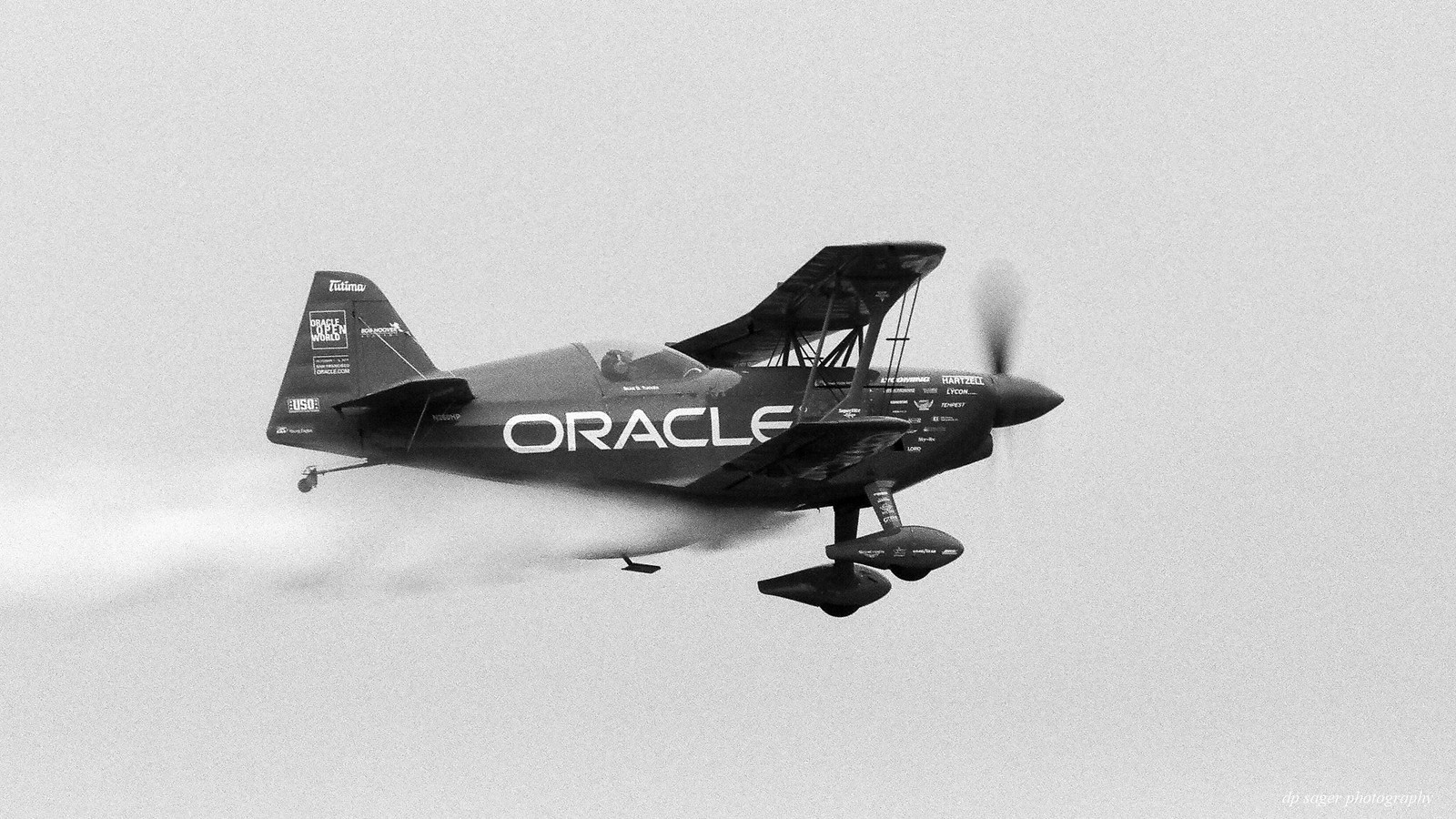Comparing film to digital - part III
Feb 14, 2019 09:08:41 #
Film remained the dominant form of photography until the early 21st century, when advances in digital photography drew consumers to the digital format. Film did not completely disappear and sales of photographic film have been on a steady upward trend. Kodak (which was under bankruptcy protection from January 2012 to September 2013) and other companies have noticed this upward trend. Research by UK-based Ilford Photo has found that 60% of current film users started using film only in the past five years and that 30% of current film users are under 35 years old.
Panchromatic B&W film records all colors of light in the same tones of gray. The light intensity (the number of photons per square inch) is what determines what shade of gray gets produced on film. The black and white images presented in this post do not use colored filters to show the basic results and representative grain of a few popular film types.
Sunflower
Chicago, IL
August 2013
Body - Canon EOS 1v
Lens - EF 200mm f/2.8L USM
Film - Kodak TMAX 400
Sunflower on film

A panchromatic emulsion produces a realistic reproduction of a scene as it appears to the human eye, although with no colors. Almost all modern photographic film is panchromatic.
Cloud Gate
aka The Bean
Chicago, IL
January 2014
Body - Canon EOS 1v
Lens - EF 28-70mm f/2.8L USM
Film - Fuji NeoPan 400
Cloudgate

The Eastman Kodak Company was found by George Eastman in 1888, Kodak followed the razor and blades strategy of selling inexpensive cameras and making large margins from consumables -- film, chemicals, and paper. As late as 1976, Kodak commanded 90% of film sales and 85% of camera sales in the U.S. market.
Santa Fe, NM
January 2015
Body - Canon EOS 1v
Lens - EF 28-70mm f/2.8L USM
Film - Ilford Delta 100
Santa Fe on film

Ilford Photo was founded in 1879 by Alfred Hugh Harman as the Britannia Works Company. Initially making photographic plates, the company grew to occupy a large site in the center of Ilford, a large town in east London, England. In 1902, the company took the name of the town to become Ilford Limited, despite the objections of the local council.
Mr. Red for the Cincinnati Reds
Great American Ball Park
Cincinnati, OH
July 2014
Body - Canon AE-1
Lens - FD 50 f/1.2L
Film - Kodak TMAX 100
Mr. Red

Fuji Photo Film Co., Ltd. was established in 1934 as the first Japanese producer of photographic films. Like its rival Eastman Kodak which dominated in the US, Fuji Photo enjoyed a longtime near-monopoly on camera film in Japan. After becoming one of the title sponsors of the 1984 Los Angeles Olympics (an opportunity that Kodak passed on), Fuji gained considerable market share in the US, while Kodak had little success in penetrating Japan. Even as early as the 1980s, Fuji had foreseen the switch from film to digital, and developed a corporate strategy to prepare for that switch. While both film manufacturers recognized the fundamental change, Fuji Photo adapted to this shift much more successfully and Eastman Kodak filed for bankruptcy in January 2012.
Sean D. Tucker
Cleveland National Air Show
Cleveland, OH
Body - Canon EOS 1v
Lens - EF 100-400mm f/4.5-5.6L IS II USM + 1.4x III
Film - Ilford FP4+
Sean D. Tucker - Team Oracle

Earlier posts in the series
Comparing film to digital - part I
Comparing film to digital - part II
The images are sized to fill your wide-screen display. Try using <F11> to maximize your browser window for the full effect. If the images overshoot your display, such as a laptop, just click on the image or the URL link and they'll resize to your screen from the host Flickr site. You can click a bit further into the image details on the Flickr page, if desired. EXIF data is available from the host Flickr pages as well. On the Flickr site, use your <L>key for Large and the <F11> for the full-screen.
If the images are not filling your widescreen display due to recent UHH changes, follow this link and update your UHH profile: https://www.uglyhedgehog.com/t-572300-1.html
Panchromatic B&W film records all colors of light in the same tones of gray. The light intensity (the number of photons per square inch) is what determines what shade of gray gets produced on film. The black and white images presented in this post do not use colored filters to show the basic results and representative grain of a few popular film types.
Sunflower
Chicago, IL
August 2013
Body - Canon EOS 1v
Lens - EF 200mm f/2.8L USM
Film - Kodak TMAX 400
Sunflower on film

A panchromatic emulsion produces a realistic reproduction of a scene as it appears to the human eye, although with no colors. Almost all modern photographic film is panchromatic.
Cloud Gate
aka The Bean
Chicago, IL
January 2014
Body - Canon EOS 1v
Lens - EF 28-70mm f/2.8L USM
Film - Fuji NeoPan 400
Cloudgate

The Eastman Kodak Company was found by George Eastman in 1888, Kodak followed the razor and blades strategy of selling inexpensive cameras and making large margins from consumables -- film, chemicals, and paper. As late as 1976, Kodak commanded 90% of film sales and 85% of camera sales in the U.S. market.
Santa Fe, NM
January 2015
Body - Canon EOS 1v
Lens - EF 28-70mm f/2.8L USM
Film - Ilford Delta 100
Santa Fe on film

Ilford Photo was founded in 1879 by Alfred Hugh Harman as the Britannia Works Company. Initially making photographic plates, the company grew to occupy a large site in the center of Ilford, a large town in east London, England. In 1902, the company took the name of the town to become Ilford Limited, despite the objections of the local council.
Mr. Red for the Cincinnati Reds
Great American Ball Park
Cincinnati, OH
July 2014
Body - Canon AE-1
Lens - FD 50 f/1.2L
Film - Kodak TMAX 100
Mr. Red

Fuji Photo Film Co., Ltd. was established in 1934 as the first Japanese producer of photographic films. Like its rival Eastman Kodak which dominated in the US, Fuji Photo enjoyed a longtime near-monopoly on camera film in Japan. After becoming one of the title sponsors of the 1984 Los Angeles Olympics (an opportunity that Kodak passed on), Fuji gained considerable market share in the US, while Kodak had little success in penetrating Japan. Even as early as the 1980s, Fuji had foreseen the switch from film to digital, and developed a corporate strategy to prepare for that switch. While both film manufacturers recognized the fundamental change, Fuji Photo adapted to this shift much more successfully and Eastman Kodak filed for bankruptcy in January 2012.
Sean D. Tucker
Cleveland National Air Show
Cleveland, OH
Body - Canon EOS 1v
Lens - EF 100-400mm f/4.5-5.6L IS II USM + 1.4x III
Film - Ilford FP4+
Sean D. Tucker - Team Oracle

Earlier posts in the series
Comparing film to digital - part I
Comparing film to digital - part II
The images are sized to fill your wide-screen display. Try using <F11> to maximize your browser window for the full effect. If the images overshoot your display, such as a laptop, just click on the image or the URL link and they'll resize to your screen from the host Flickr site. You can click a bit further into the image details on the Flickr page, if desired. EXIF data is available from the host Flickr pages as well. On the Flickr site, use your <L>key for Large and the <F11> for the full-screen.
If the images are not filling your widescreen display due to recent UHH changes, follow this link and update your UHH profile: https://www.uglyhedgehog.com/t-572300-1.html
Feb 14, 2019 09:14:01 #
Feb 14, 2019 11:14:00 #
CHG_CANON wrote:
Film remained the dominant form of photography until the early 21st century, when advances in digital photography drew consumers to the digital format. Film did not completely disappear and sales of photographic film have been on a steady upward trend. ...
There are a couple of reasons for the resurgence of film besides the challenge and enjoyment of using it.
The first is the that most photographers display their results on the Internet rather than printing and displaying images in galleries (other than their own homes). 16 MP is more than enough to create a decent image for viewing from a normal distance, i.e., to be viewed from a distance of about one or two times the image width or diagonal. In the right hands, even a smart phone can produce a decent image. Subject matter is more important than megapixels.
The second is the opportunity to explore the capabilities of some excellent vintage equipment available at bargain prices. Many of the better old lenses can deliver very nice images.
You don't really need to go beyond small format (35mm) film to realize all of this. But if you want to go beyond the small format, additional resolution and sharpness is linked to format size.
It's virtually impossible to appreciate the benefits of a medium or large format print by looking at your computer screen.
Feb 15, 2019 15:03:57 #
selmslie wrote:
There are a couple of reasons for the resurgence o... (show quote)
Thanks Scotty! I've seen scans of larger format film that is / was clearly more detailed. I just don't see myself moving up to larger film sizes.
Feb 15, 2019 15:04:13 #
If you want to reply, then register here. Registration is free and your account is created instantly, so you can post right away.

